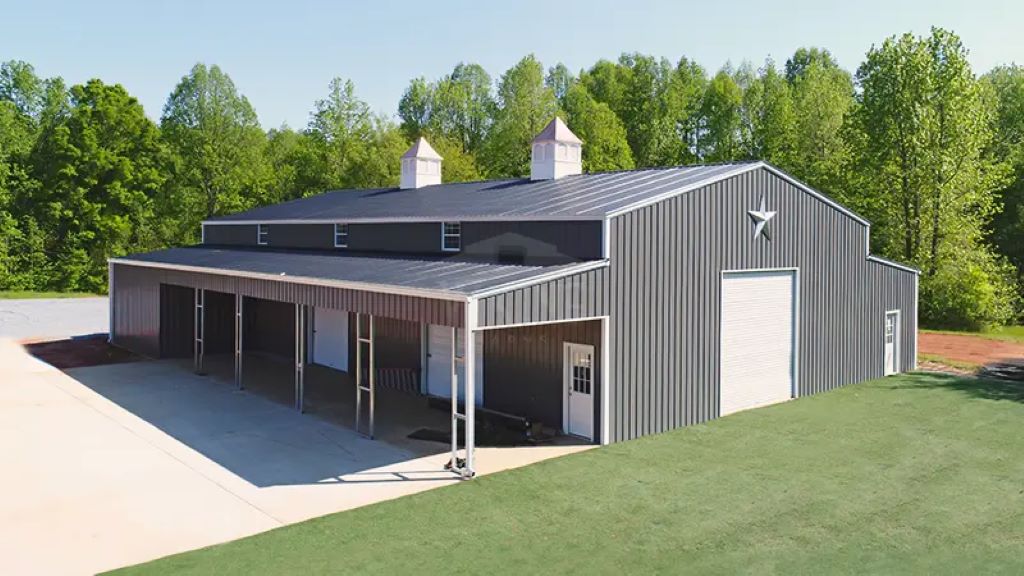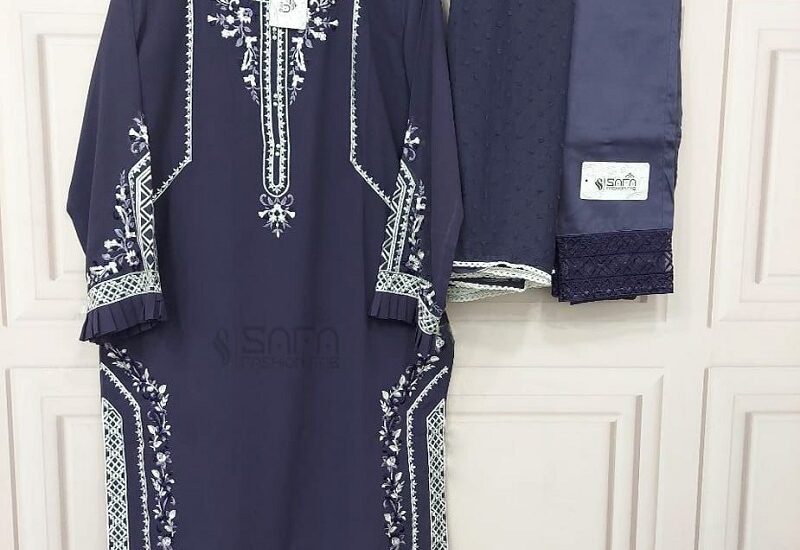Metal barns are often the optimal choice for livestock due to their durability and low maintenance. They provide safe shelter and withstand harsh weather conditions effectively. Selecting the ideal housing for livestock is crucial for their protection and productivity. Metal barns stand out among agricultural construction options, offering various benefits that cater to the needs of farm animals. With advancements in steel fabrication, these structures are not only robust and resilient but also customizable to suit different farming requirements.
They excel in longevity and can resist environmental challenges such as strong winds, heavy snowfall, and even fire threats. Featuring versatility in design, metal barns can also include insulation options to maintain a comfortable temperature for animals year-round, which is vital to their well-being. Their ease of maintenance ensures that keeping a clean and healthy environment for livestock is simpler and more cost-effective than ever. By choosing a metal barn, farmers make a wise investment that contributes to efficient livestock management and overall farm success.
Introduction To Metal Barns In Agriculture
Metal barns stand out in the farming world today. Traditional barns were often built from wood or stone. Yet, over years, construction materials evolved. On modern farms, durability and efficiency lead the way. Metal structures fit these needs perfectly.
Farmers notice that metal barns are less costly over time. They resist weather and pests better than old-style barns. This means they can last longer. They also need less care. This saves time and money. These barns have become a top pick for housing livestock.
Benefits Of Metal Barns For Livestock
Metal barns offer outstanding resistance to harsh weather, such as heavy snow, high winds, and driving rain. These structures stand strong against many climate challenges, ensuring that livestock remain safe and secure during extreme conditions. Their fortitude helps prevent damage that can arise from environmental stressors, protecting the animals and the investment made in the facility.
Considering the long haul, metal barns provide significant savings. The durability of these structures means less maintenance, fewer repairs, and a reduced chance of needing premature replacements. It’s this kind of financial efficiency that makes metal barns a smart choice for farmers looking to optimize their operational budget while securing the well-being of their livestock over many years.
Animal Health And Metal Structures
Metal barns offer superior control over internal environments for livestock health. These structures can maintain consistent temperatures, which is crucial for animals’ comfort and well-being. With advanced insulation options, metal barns help protect animals from extremes of heat and cold. Proper ventilation systems further enhance this environment, reducing moisture and contaminants.
A key advantage of metal barns is their resistance to pests and rodents. Traditional wood structures are prone to infestations that can spread disease. In contrast, metal barns deter such nuisances, safeguarding livestock from illnesses they carry. Easy to clean and disinfect, these buildings support hygienic conditions to prevent the spread of disease.
Customization And Expandability
Metal barns offer exceptional design flexibility to meet the unique needs of different livestock. Customizable features such as adjustable partitions, ventilation systems, and varied feeding mechanisms cater to the requirements of a variety of animals. Owners can modify layouts for optimal space utilization and functionality.
Considering future expansion, metal barns are especially advantageous. Structural extensions can be planned with ease, allowing for additional space as the need arises. This means that the infrastructure grows with your livestock count or diversification. Here are some options:
- Adding lean-to sections for extra cover
- Integrating more stalls or pens as required
- Enhancing storage areas for feed and equipment
Maintenance Considerations
Metal barns stand out for their simple cleaning processes. Surfaces resist stains and moisture. This prevents bacteria growth, safeguarding livestock health. Regular hosing down does the job. For disinfecting, common industrial cleaners are effective on metal surfaces.
Repairs are rarely needed, a significant benefit. Metal panels are durable against weather and daily wear. If damage occurs, replacement panels integrate easily. This saves time and money. Thus, metal barns prove superior in ease and cost of maintenance.
Environmental Impact
Metal barns stand out for their high recyclability. Nearly all components of metal structures can be recycled, giving them a sustainable edge over other materials. This reduces waste and conserves resources, making them an eco-friendly choice.
Energy efficiency is another significant benefit of metal barns for livestock. With the potential to integrate insulation, these barns maintain a consistent temperature. This reduces energy consumption, as less heating or cooling is needed. Therefore, metal barns can lead to lower energy bills and a smaller carbon footprint.
Cost Comparison With Traditional Barns
Metal barns often have a higher initial cost compared to traditional wooden structures. Yet, the long-term savings can be significant due to reduced maintenance costs and greater durability. Owners should consider that metal barns typically offer a longer life expectancy, staying sturdy for decades with minimal upkeep.
Comparing the two, steel structures can last up to 40 years or more. On the other hand, wood structures may require more frequent repairs or replacements over time, often lasting around 15 to 20 years. This difference in longevity means that, over time, the investment in a metal barn could prove more cost-efficient despite the higher upfront cost.
Related: How to Install Ridge Cap on Metal Hip Roof
Case Studies And Real-world Applications
Metal barns prove beneficial for many farmers. Durability against elements stands as a key factor. One farmer noted their metal barn withstood harsh weather, protecting their cattle effectively. Reports emphasize how these structures deter pests and rodents efficiently.
Another testimony highlighted easy maintenance and longevity. A sheep breeder found her metal barn to be cost-effective in the long term. She appreciated the minimal repair needs compared to traditional wood barns.
Farmers also value quick assembly times. A poultry farmer was pleased with the speed of construction, reducing downtime. This quick setup allowed for more immediate use of the facility.
Factors To Consider Before Investing
Metal barns offer unique advantages but require careful consideration. Your local climate and geography play critical roles. Heavy snowfall areas need robust, sloped roofs to prevent accumulation. Conversely, hot climates demand good ventilation to reduce temperatures inside the barn.
Customizing barns for livestock is essential. Cattle might require more open space, while horse barns need individual stalls. Efficient layouts ensure easy access to food, water, and areas for resting. Considerations include the type and number of animals, their size, and their behavioral needs. For instance, goats may need secure fencing to prevent escapes.
| Livestock Type | Space Requirement | Special Features |
| Cattle | Open areas | Sturdy partitions |
| Horses | Individual stalls | Non-slip flooring |
| Goats | Secure outdoor access | Tight fencing |
Frequently Asked Questions For Are Metal Barns The Optimal Choice For Livestock?
What Is Better Pole Barn Or Metal Building?
Choosing between a pole barn and a metal building depends on your needs. Metal buildings offer durability and low maintenance, while pole barns are cost-effective and versatile for various uses.
Is Metal Barn Better Than Wood?
Metal barns offer greater durability and less maintenance compared to wood. They resist termites, fire, and rot, making them a more sustainable, long-term choice.
Is It Cheaper To Build A Metal Or Wood Pole Barn?
Building a metal pole barn generally costs less than a wood one due to lower material and maintenance expenses.
What Is The Difference Between Tubular Steel And Pole Barn?
Tubular steel buildings consist of hollow, round or rectangular steel tubes for structure. Pole barns feature large wooden poles as their structural support. Each offers different durability, cost, and construction techniques.
Conclusion
Metal barns stand as a robust contender for housing livestock, offering durability, adaptability, and cost-efficiency. Their low maintenance joined with resistance to pests affirms their value. Farmers seeking a practical solution will find metal barns a wise investment for safeguarding their animals.
Embrace this sturdy option to guarantee your livestock’s well-being.









